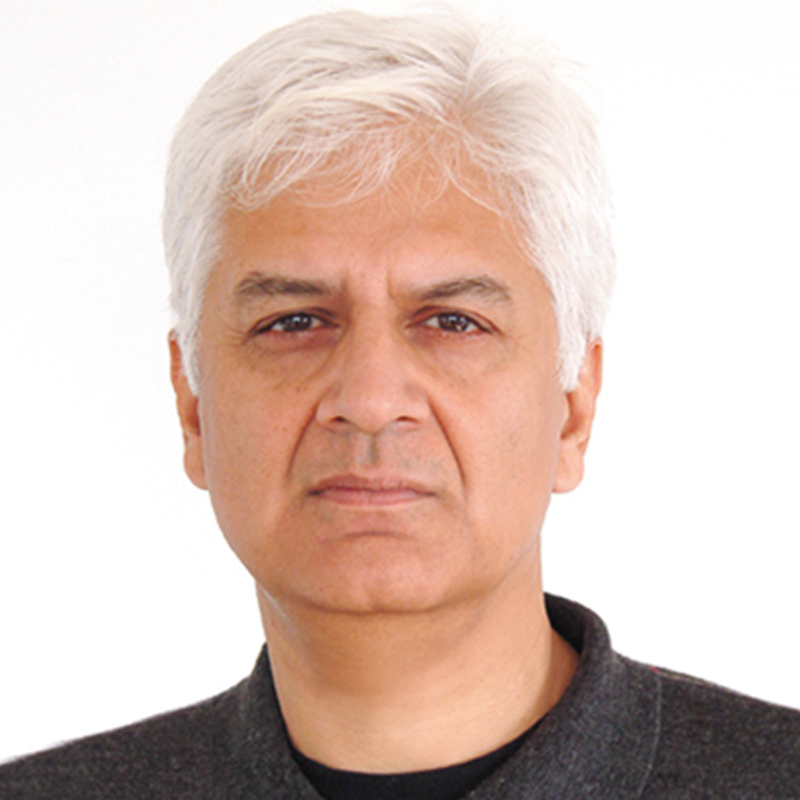Divya Adhikari, Sanjima Jugjali Pun
German summary: Der Klimawandel hat gravierende Auswirkungen auf die Himalayas: Schmelzende Gletscher, Überschwemmungen und unregelmäßige Monsune gefährden die Lebensgrundlagen von Millionen Menschen.Der nepalesische Journalist Kunda Dixit kritisiert die ungleiche Berichterstattung, da Katastrophen in reichen Ländern eine größere Aufmerksamkeit erhalten als jene in Nepal. Er fordert Journalisten dazu auf, wissenschaftliches Wissen aufzubauen, Fakten zu liefern und Lösungen in den Fokus zu rücken. Dies sei essentiell, um eine effektive Auseinandersetzung mit der Klimakrise in den Medien zu gewährleisten und einen Beitrag zur Förderung von Veränderungen zu leisten

Accurate and impactful climate change reporting is vital for understanding and addressing the challenges faced by vulnerable regions like the Himalayas. These fragile and critical ecosystems are among the first to feel the effects of climate change, and the media plays a key role in raising awareness and driving their solutions. Kunda Dixit, a leading Nepali journalist and environmental expert, shares his insights on the challenges and opportunities in reporting on climate change in the Himalayas. Dixit is the founding editor of Nepali Times and has worked extensively to highlight environmental issues both in his native Nepal and internationally. He is the author of “Dateline Earth: Journalism as If the Planet Mattered,” a book that explores topics such as climate collapse, global inequities, and governance. His perspectives shed light on how the media can bridge gaps, amplify voices, and inspire action in the fight against climate change.
Dixit highlights the alarming effects of climate change in the Himalayas. “Glaciers are receding and shrinking, glacial lakes are expanding. Glacial lakes burst due to avalanche or earthquakes, causing catastrophic floods downstream. Monsoons have become erratic, winter rains have failed for 8 of the last 10 years. On September 28-29 Kathmandu had record-breaking rain: half the average annual rain in 40 hours. It caused landslides and floods that killed 250 people and knocked out half of Nepal’s total electricity generation. This has led to record-breaking wildfires in spring. 2024 was especially bad. Springs are going dry.” These changes severely impact agriculture, water security, and the livelihoods of people in the region. He believes that while media coverage has improved both locally and internationally, it still remains uneven. “They are covering it more, but the focus is still on rich countries and what they are doing. Spain and Nepal both had catastrophic floods one month apart in September, and the same number of people were killed in both countries. Spain got much more coverage. Local media in Nepal tends to blame everything on the climate crisis, even problems like food insecurity or lack of water which pre-date climate change.”
He believes that while media coverage has improved both locally and internationally, it still remains uneven. “They are covering it more, but the focus is still on rich countries and what they are doing. Spain and Nepal both had catastrophic floods one month apart in September, and the same number of people were killed in both countries. Spain got much more coverage. Local media in Nepal tends to blame everything on the climate crisis, even problems like food insecurity or lack of water which pre-date climate change.”
Dixit emphasizes the need for the media to focus on solutions. “There is now adequate awareness about what is happening. What does not get enough attention in the media are solutions. Yet, there are plenty of positive stories out there—we just have to go and find them.” He points out that many journalists lack a science background, which limits their ability to report on climate change effectively. “Most reporters do not have a science background. First, we need to understand the science behind the climate crisis. Journalists need to know the difference between carbon dioxide and carbon monoxide, for instance. The rule for climate-sensitive journalism is the same as for good journalism everywhere—get your facts right, go in-depth, humanize the story, don’t sensationalize, simplify jargon, use multimedia tools and infographics, find and report on solutions.”
The Himalayas are on the frontline of climate change, and the media plays a critical role in addressing this crisis. By improving the depth and accuracy of reporting, journalists can help raise awareness and inspire action. Kunda Dixit’s insights remind us that informed and solution-oriented journalism is essential for tackling the climate challenges facing one of the world’s most vulnerable regions.
